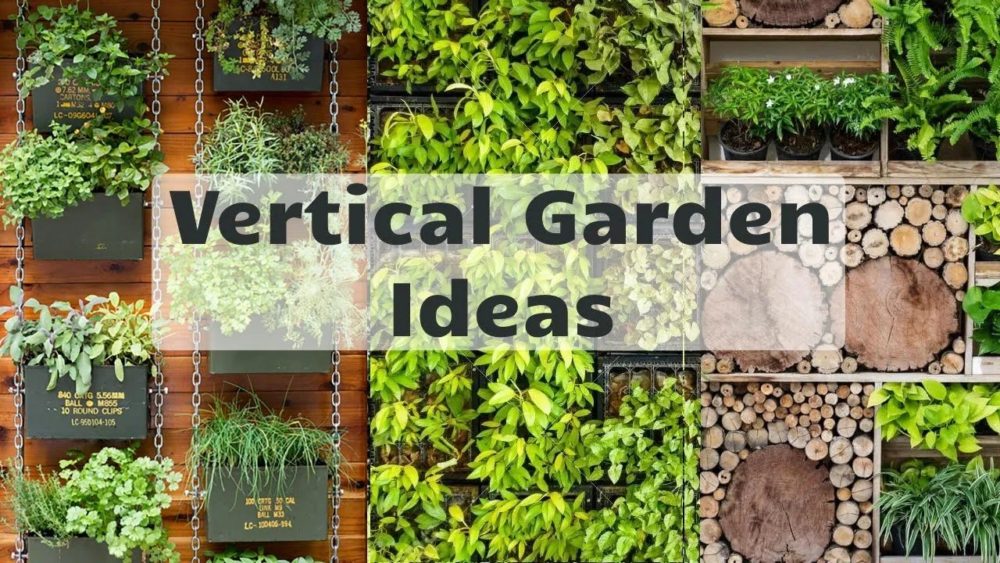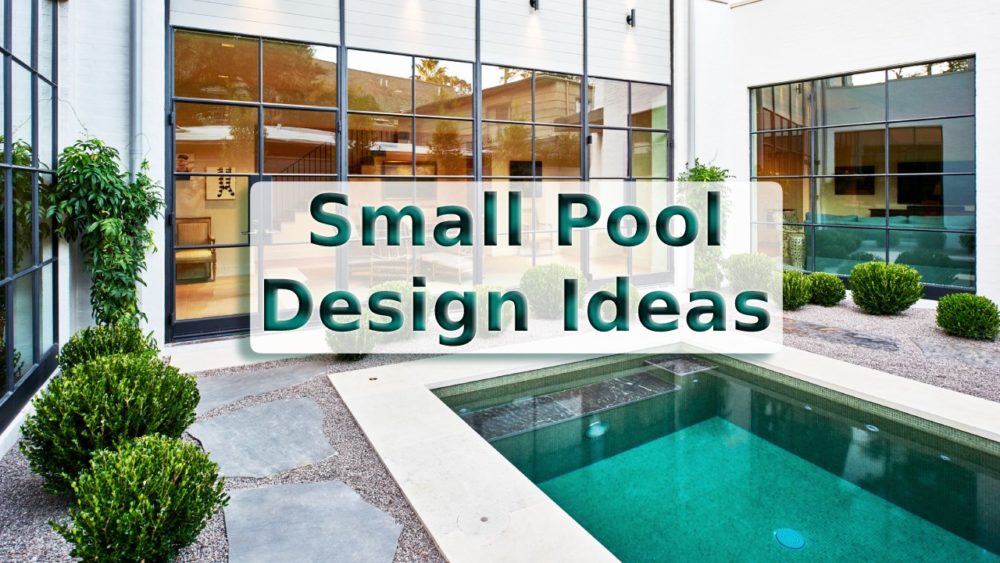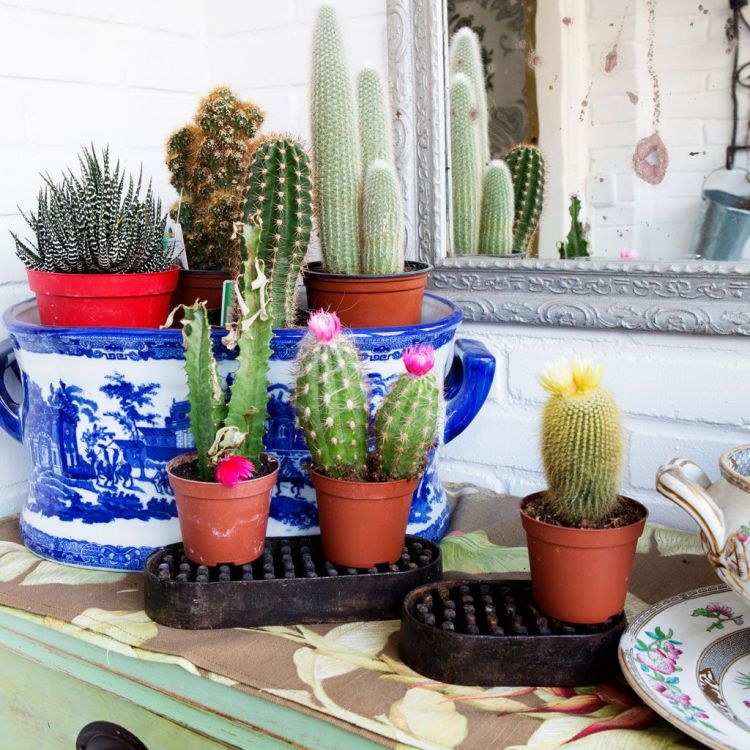Vertical gardens became very popular last years, especially in modern design. Initially, this type of landscaping was created to save space and maximize the useful use of the area. However, over time, people have liked vertical gardens so much that now use them in any backyard, large or small, simply for visual decoration. Moreover, vertical structures with plants are installed even inside houses.

The vertical garden in modern style can be used to maximize the use of space and add greenery to an otherwise urban environment. In addition, it can provide a visually appealing and sustainable way to grow plants. This type of garden can be created on a wall, fence, or any other vertical structure, and can be made up of a variety of plants, including vegetables, herbs, and flowers.
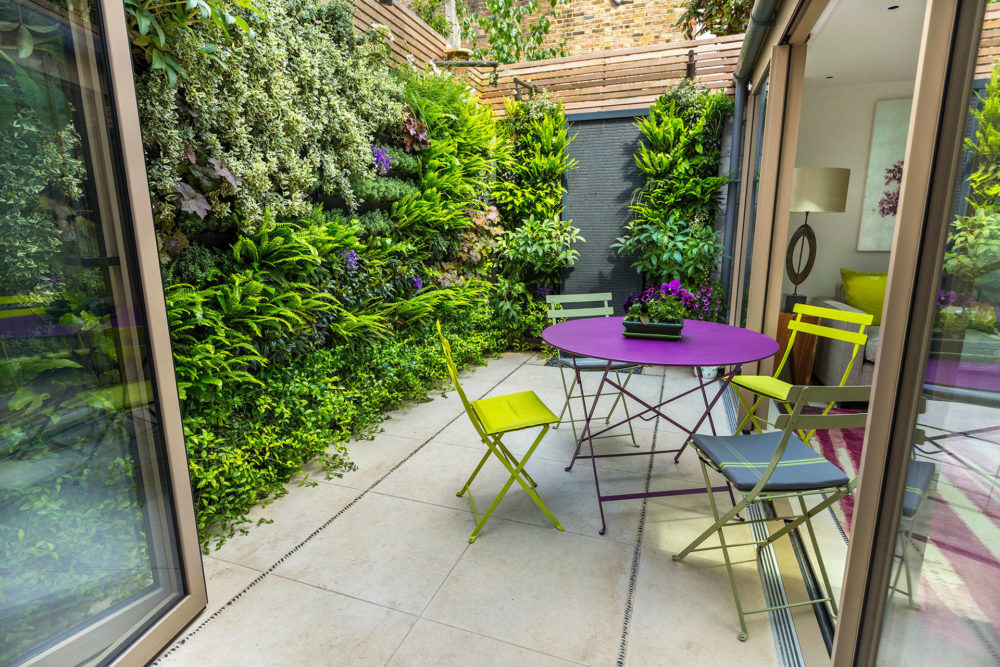
5 Main Types of vertical garden

There are several types of vertical gardens, including:
- Living Wall: This is a type of vertical garden where plants are grown in a series of soil-filled pockets or containers that are attached to a wall or other vertical surface. The soil-based plants are typically arranged in a mosaic-like pattern to create a wall of greenery.
- Hydroponic Vertical Garden: This type of vertical garden uses a hydroponic system to grow plants. The plants are grown in nutrient-rich water rather than soil, and are supported by a vertical structure. This type of vertical garden is often seen in commercial settings and is ideal for growing leafy greens and herbs.
- Trellis Vertical Garden: A trellis vertical garden is created by growing climbing plants, such as vines or ivies, up a vertical support, such as a trellis or wall. The plants can be trained to grow in a specific pattern or design, and can provide shade, privacy, and a green screen.
- Hanging Basket Vertical Garden: A hanging basket vertical garden is made up of a series of hanging baskets, each filled with plants and attached to a wall, fence, or other vertical surface. This type of vertical garden is ideal for growing flowers, herbs, or small vegetables.
- Pallet Vertical Garden: A pallet vertical garden is created by stacking and planting in a series of wooden pallets that have been stacked vertically and attached to a wall or other vertical surface. This type of vertical garden is ideal for growing a variety of plants, including vegetables, herbs, and flowers.
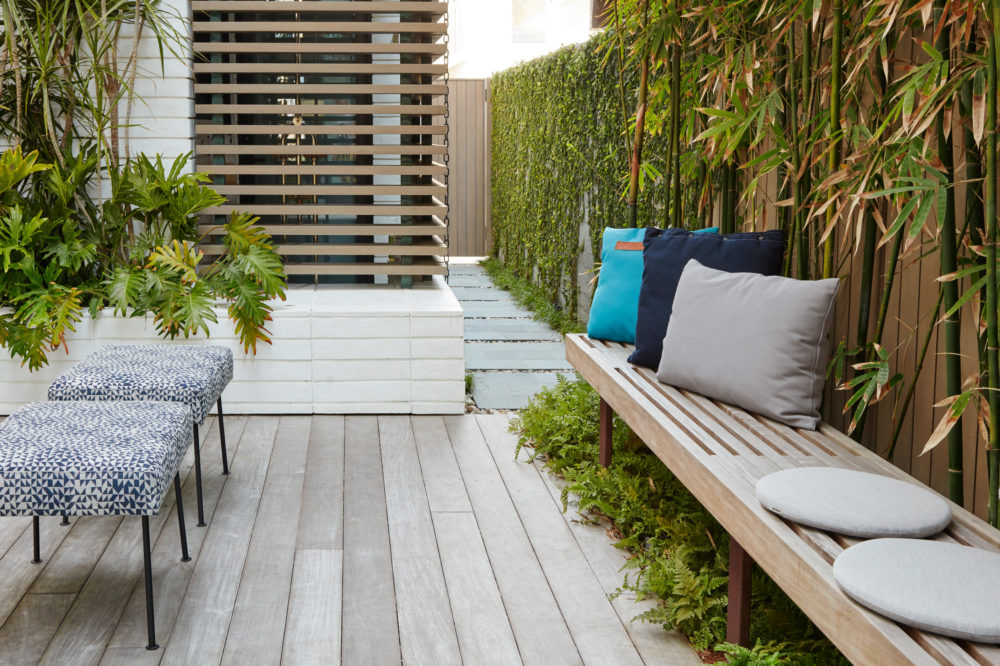
Regardless of the type of vertical garden, the goal is to create a visually appealing and sustainable way to grow plants in a limited space.
How to create a vertical garden?
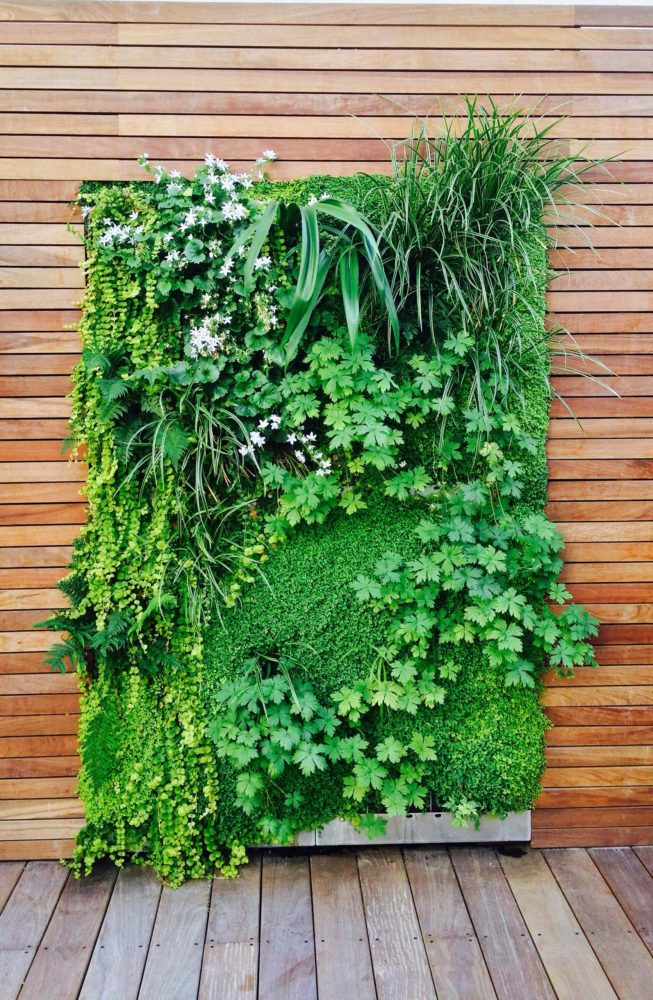
Here are some general steps to create a vertical garden:
- Choose a location: Select a wall, fence, or other vertical surface that gets enough light for the plants you want to grow. Consider factors such as shade, wind, and access to water when choosing a location.
- Decide on the type of vertical garden: Choose the type of vertical garden that best fits your needs and space, such as a living wall, hydroponic system, trellis, hanging baskets, or pallet garden.
- Gather materials: Depending on the type of vertical garden you choose, you will need materials such as containers or pockets for soil-based plants, a hydroponic system, a trellis, hanging baskets, wooden pallets, and hardware for mounting the garden.
- Install the support structure: Depending on the type of vertical garden you choose, you may need to install a support structure, such as a hydroponic system, trellis, or wooden pallets. Ensure that the structure is securely attached to the wall or other vertical surface.
- Fill containers with soil or install hydroponic system: For soil-based plants, fill the containers or pockets with a good quality potting soil and add a layer of drainage material, such as gravel or coconut coir, to prevent water from pooling in the bottom of the container. For hydroponic systems, follow the manufacturer’s instructions to set up the system and fill it with nutrient-rich water.
- Choose and plant your plants: Choose plants that are suitable for the amount of light available and the type of vertical garden you have created. Make sure to plant the right plants in the right containers or pockets and follow the care instructions for each type of plant.
- Water and maintain your vertical garden: Water your vertical garden regularly and fertilize the plants as needed. Keep an eye out for pests and diseases, and take steps to control them if necessary. Regular pruning and grooming will help keep your vertical garden looking its best.

Creating a vertical garden can be a rewarding and sustainable way to grow plants in a limited space. With a little effort and creativity, you can create a beautiful green wall that will bring life and beauty to your outdoor space.
Modern trends in vertical gardening

Vertical gardening has become increasingly popular in recent years, and new trends are emerging as more people look for creative ways to bring greenery into their homes and outdoor spaces. Some of the latest trends in vertical gardening include:
- Use of indigenous plants: The use of indigenous plants in vertical gardens has become increasingly popular. Indigenous plants are well-adapted to the local climate and soil conditions, and can thrive with less maintenance and water.
- Modular systems: Modular systems for vertical gardens have become more popular, allowing for a greater degree of customization and adaptability. These systems can be easily reconfigured or expanded as needed, making them a flexible solution for any space.
- Green facades: Green facades, or vertical gardens that cover the exterior of a building, have become more popular in recent years. These green facades can provide insulation, reduce energy costs, and improve air quality.
- Incorporation of technology: The use of technology, such as sensors, lighting, and irrigation systems, has become more common in modern vertical gardens. This allows for greater control over the growing environment, and can result in healthier, more productive plants.
- Innovative plant selections: Vertical gardens are no longer limited to traditional green foliage plants. Innovative plant selections, such as edible plants, flowering plants, and air-purifying plants, are being used to create colorful and functional vertical gardens.
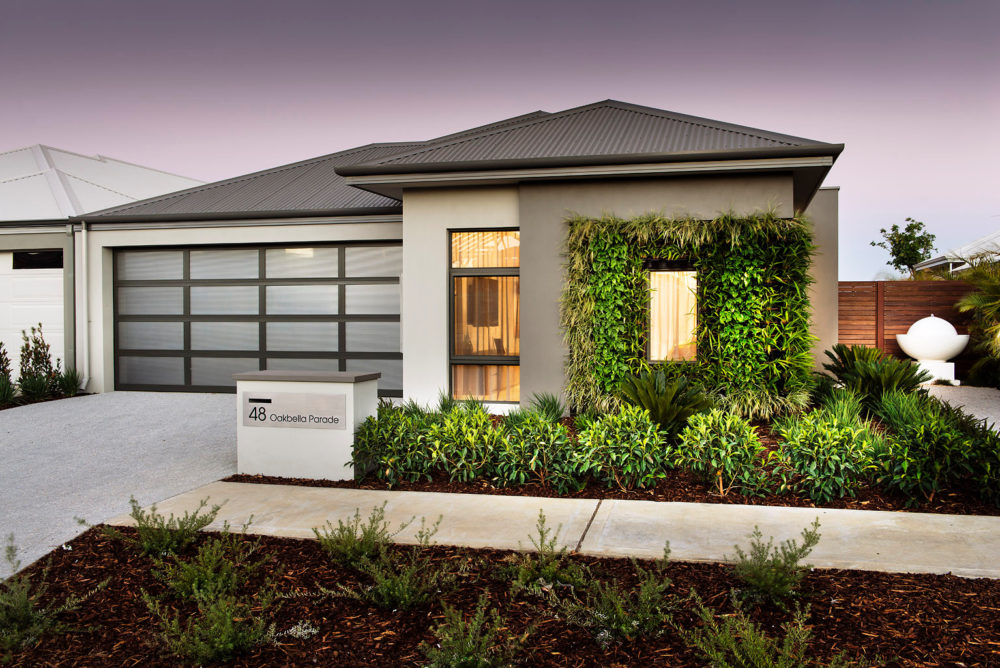
These trends in vertical gardening reflect a growing interest in sustainable, low-maintenance, and aesthetically pleasing ways to incorporate greenery into our lives. Whether you’re creating a small indoor garden or a large green wall, there are many modern options available to suit your needs and preferences.
Take care of the vertical garden
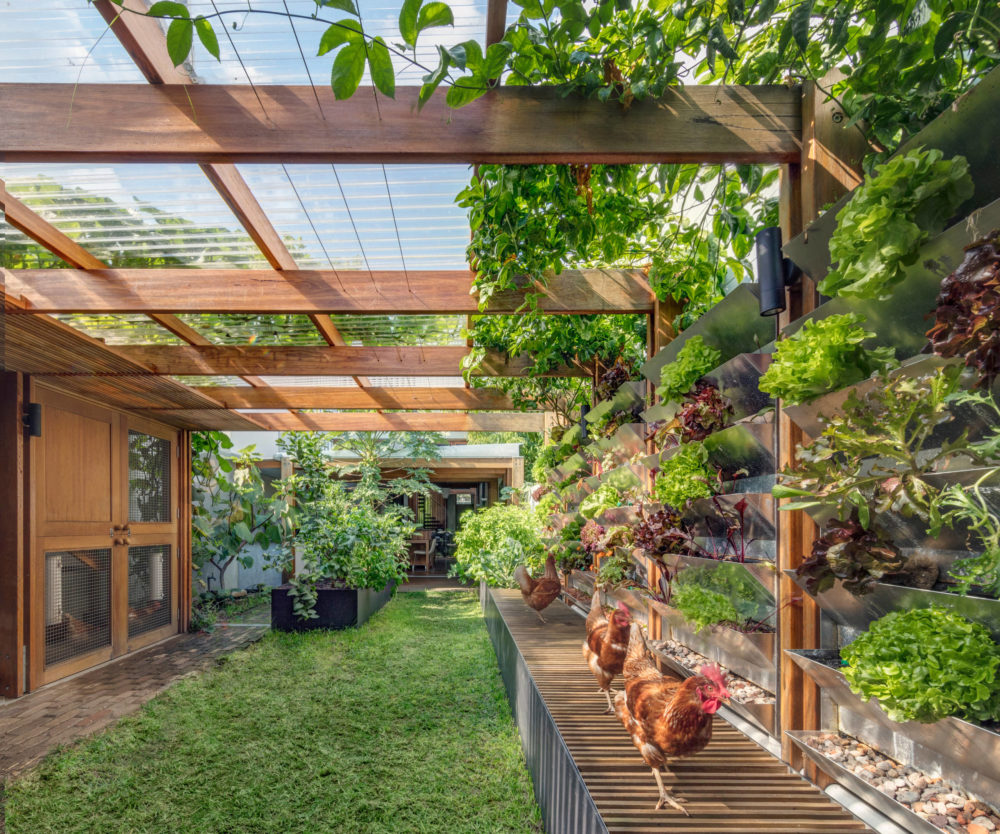
Taking care of a vertical garden requires regular maintenance to keep the plants healthy and thriving. Here are some tips for caring for your vertical garden:
- Watering: Water your vertical garden regularly, depending on the plants and their needs. Be careful not to overwater, as excess moisture can lead to root rot and other problems. Use a watering can or irrigation system to deliver water directly to the roots of the plants.
- Light: Make sure your vertical garden is getting the right amount of light for the plants you have chosen. Some plants prefer full sun, while others do better in partial shade. If necessary, adjust the location of your garden or add artificial light to provide adequate light.
- Fertilizing: Fertilize your vertical garden regularly to ensure that the plants receive the nutrients they need to grow. Choose a fertilizer that is appropriate for the type of plants you have, and follow the manufacturer’s instructions for application.
- Pruning: Regular pruning is necessary to keep your vertical garden looking its best and to encourage healthy growth. Remove any dead, damaged, or diseased leaves or stems, and shape the plants as needed.
- Pest control: Keep an eye out for pests and take steps to control them as necessary. Use organic methods such as companion planting, neem oil, and beneficial insects, whenever possible.
- Monitoring: Regular monitoring of your vertical garden is important to ensure that the plants are healthy and growing well. Check the plants regularly for signs of stress, disease, or pests, and take steps to address any issues as soon as they arise.

With proper care and attention, your vertical garden can be a beautiful and sustainable source of greenery for many years to come. Regular maintenance will help keep your plants healthy and prevent problems from arising.
Plants for vertical garden
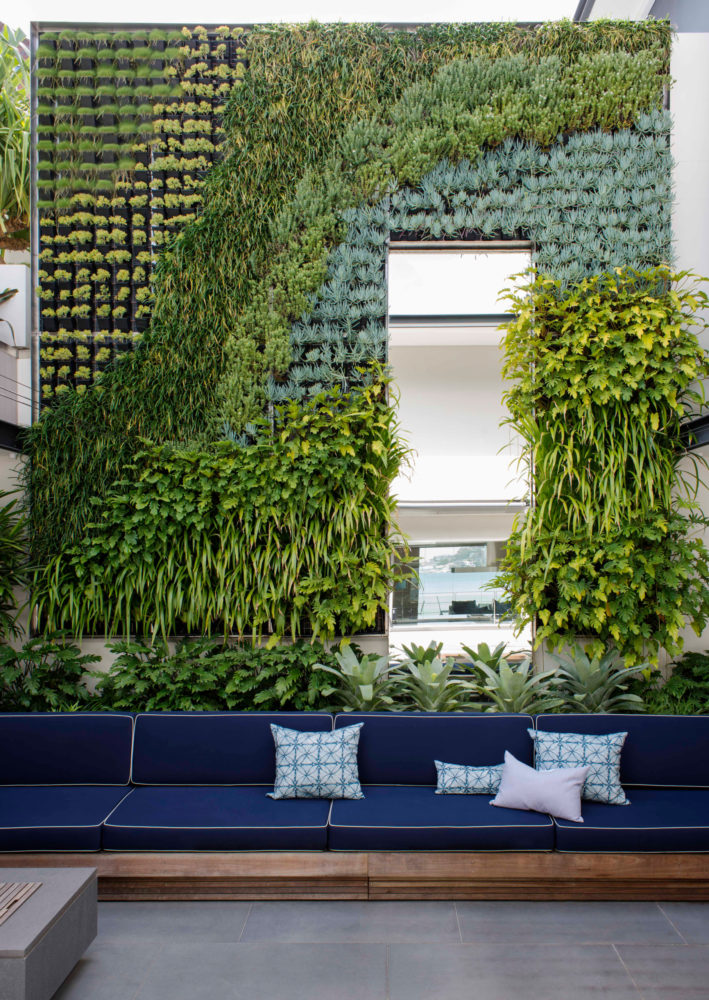
There are many different plants that can be used in a vertical garden, and the best options will depend on the specific growing conditions, such as light, temperature, and humidity. Here are some popular plants that are well-suited for vertical gardens:
- Ferns: Ferns are a great option for a vertical garden, as they are low-maintenance and adapt well to the conditions in a vertical garden.
- Succulents: Succulents are well-suited to vertical gardens, as they are able to store water in their leaves and stems and can survive long periods without water.
- Herbs: Many herbs, such as basil, thyme, and rosemary, are well-suited to vertical gardens, as they are hardy and easy to care for.
- Vines: Vines, such as English ivy, Boston ivy, and climbing roses, are great for vertical gardens, as they can be trained to grow upward and create a lush green wall.
- Air-purifying plants: Certain plants, such as English ivy, peace lilies, and spider plants, are known for their air-purifying properties, making them ideal for vertical gardens in indoor spaces.
- Edible plants: Edible plants, such as strawberries, lettuce, and herbs, can also be used in vertical gardens, providing fresh produce while adding to the beauty of your garden.
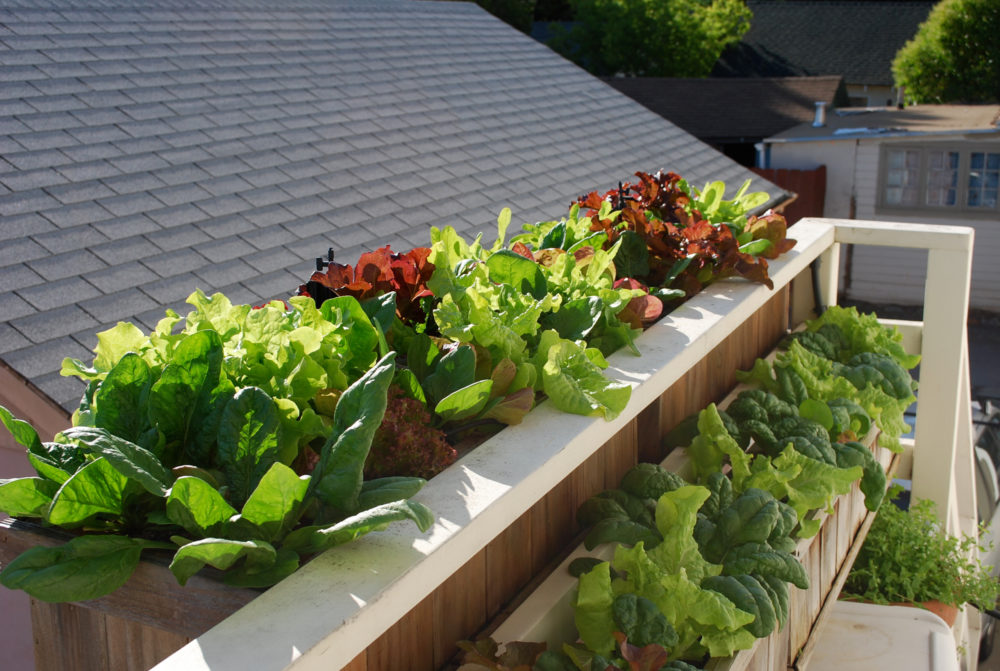
When choosing plants for your vertical garden, consider the amount of light and water the plants will need, as well as the conditions in your specific location. It’s also a good idea to choose plants that are native to your area, as they are better adapted to local growing conditions and will require less maintenance.
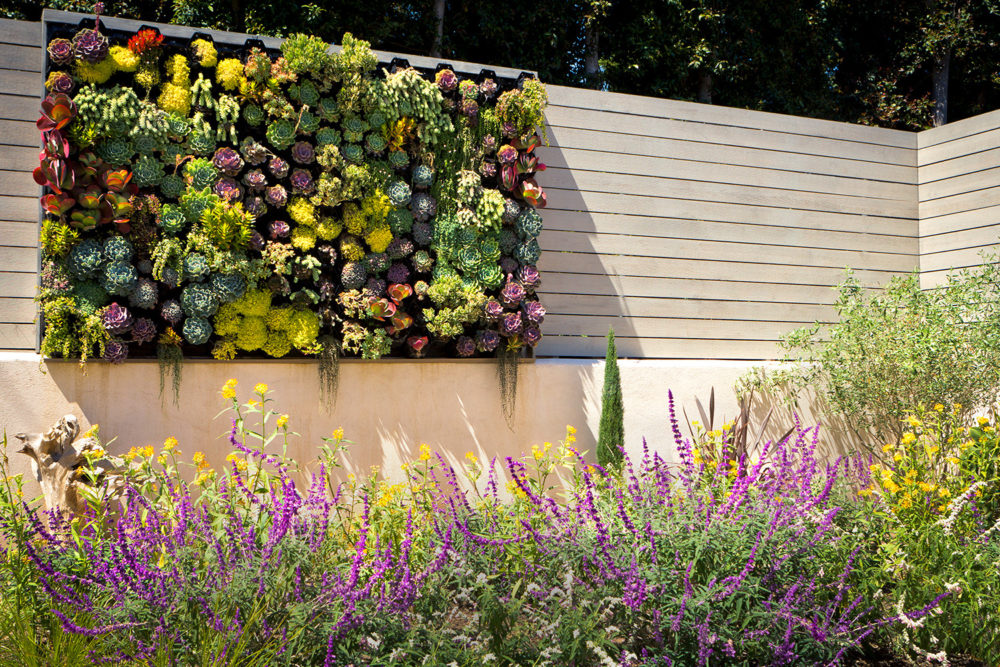
Vertical garden ideas for the backyard
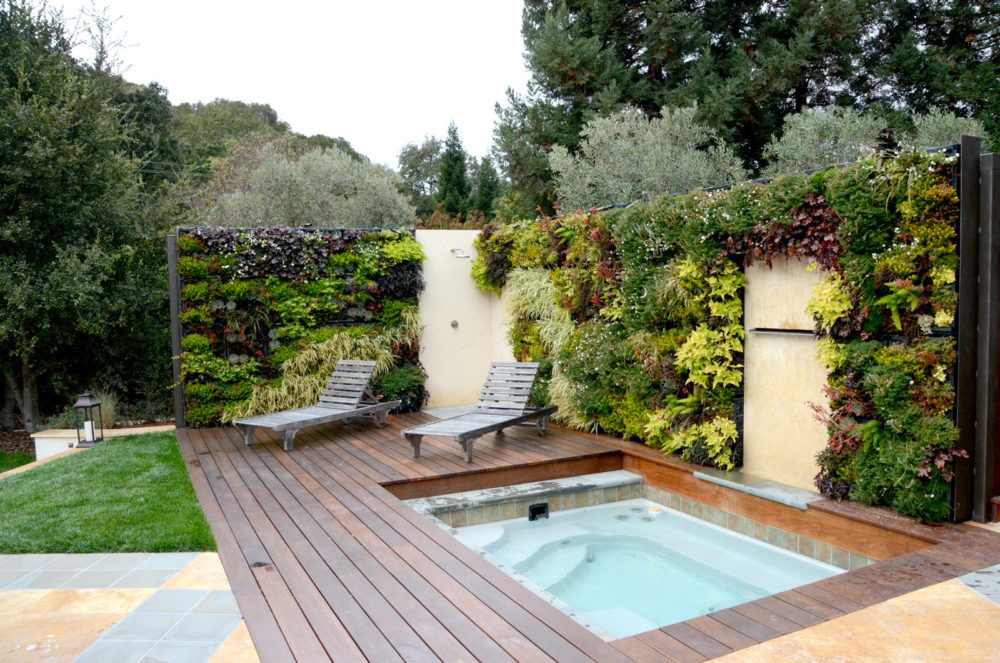
Here are some creative vertical garden ideas that you can use in your backyard:
- Vertical trellis garden: Create a vertical garden on a trellis by planting climbing plants such as grapes, clematis, or jasmine. This type of vertical garden provides shade and privacy, and can also create a stunning visual feature.
- Vertical herb garden: Use a wooden pallet, mesh wire or a series of pots to create a vertical herb garden in your backyard. You’ll have fresh herbs at your fingertips, and the garden will add a touch of green to your outdoor space.
- Green wall: Create a large-scale vertical garden using a variety of plants, such as ferns, succulents, or flowering vines. This type of vertical garden provides privacy, enhances the look of your backyard, and can improve air quality.
- Living wall planter: Use a series of wall-mounted planters to create a vertical garden in your backyard. This is a great option for smaller spaces, as it allows you to grow a variety of plants in a compact area.
- Vertical vegetable garden: Make the most of your small backyard by creating a vertical vegetable garden. You can use a variety of containers, such as hanging baskets, vertical planters, or raised beds, to grow your favorite vegetables.
- Vertical bamboo garden: Create a serene and calming vertical garden using bamboo plants. Bamboo is a fast-growing plant that provides privacy, and it’s also great for reducing noise levels.
- Hanging garden: Use a variety of hanging baskets or wall-mounted planters to create a lush and vibrant vertical garden. This type of garden is perfect for adding color and interest to your outdoor space.
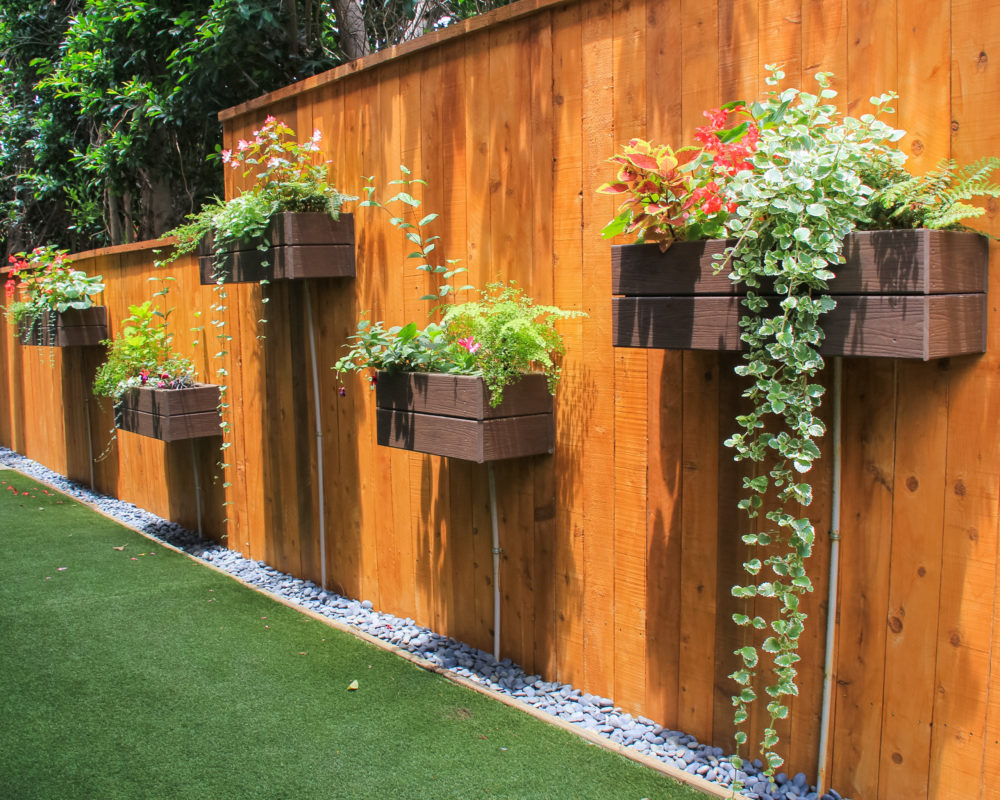
These are just a few of the many creative vertical garden ideas that you can use in your backyard. With a little imagination, you can create a beautiful and functional green space that will enhance your outdoor living experience.

Vertical garden considering
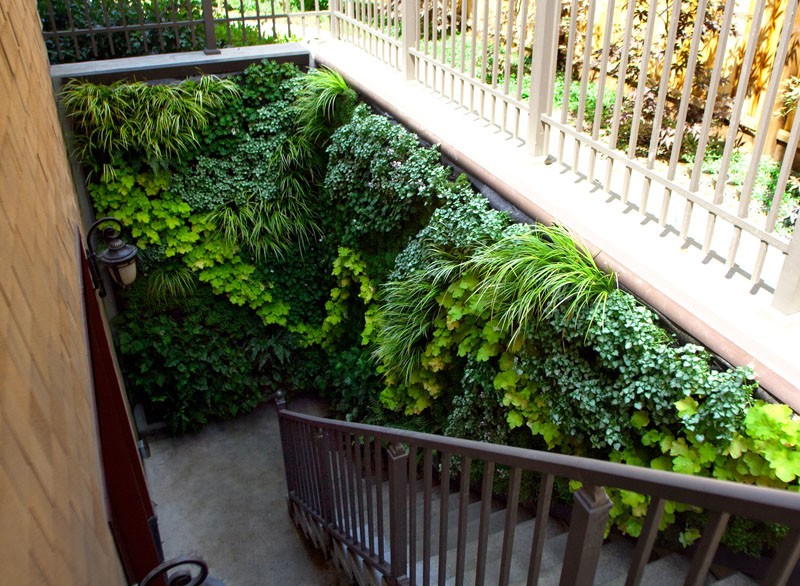
When considering a vertical garden, there are several important factors to take into account:
- Space: The first consideration is the amount of space you have available for your vertical garden. Vertical gardens can be small or large, and can be used in a variety of spaces, such as a patio, balcony, or backyard.
- Light: Vertical gardens require a certain amount of light to thrive. You’ll need to consider the amount of sunlight that your garden will receive, as well as the type of plants you want to grow, as some plants require more light than others.
- Watering: Vertical gardens also require regular watering, so you’ll need to take this into consideration when choosing your location. It’s also important to consider the type of irrigation system you’ll use, as some systems are more effective and efficient than others.
- Climate: The climate in your area is also an important consideration when planning a vertical garden. You’ll need to choose plants that are suitable for the climate and weather conditions in your area.
- Maintenance: Vertical gardens require ongoing maintenance, including watering, pruning, and fertilizing. It’s important to choose plants that are low maintenance, and to plan for the time and resources required to keep your garden healthy and thriving.
- Budget: Finally, you’ll need to consider your budget when planning a vertical garden. Vertical gardens can range from simple and low-cost to more elaborate and expensive, so it’s important to determine how much you’re willing to spend and to plan accordingly.
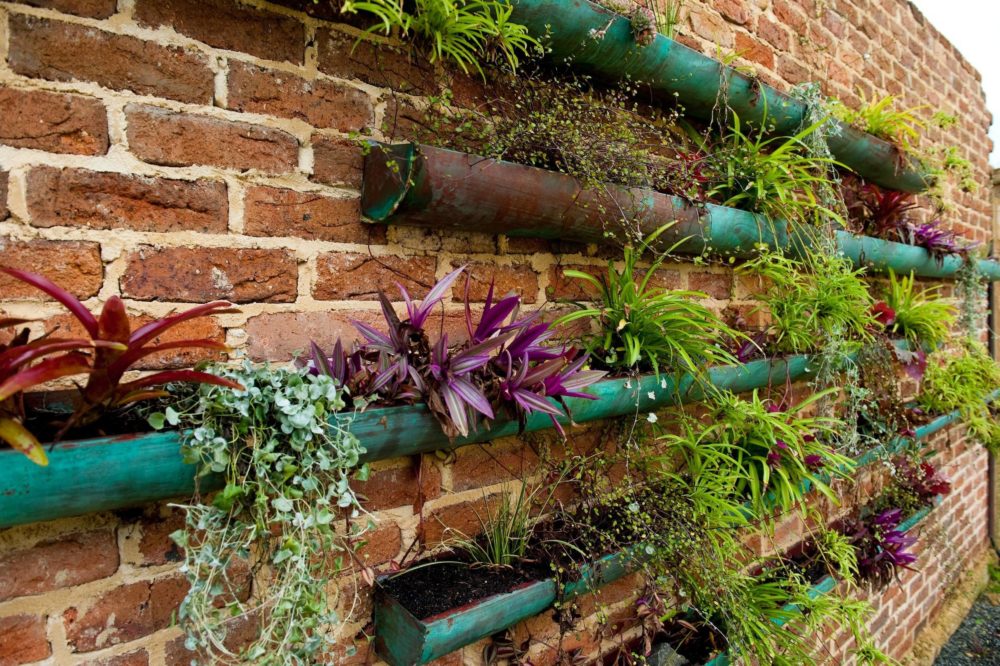
By taking these factors into consideration, you can create a beautiful and functional vertical garden that meets your needs and enhances your outdoor living space.
Vertical garden advantages

Vertical gardens have several advantages, including:
- Space saving: Vertical gardens are ideal for small spaces, as they allow you to grow plants in a compact area. This makes them a great option for balconies, patios, and small yards.
- Increased plant diversity: Vertical gardens provide ample space for growing a variety of plants, including herbs, vegetables, flowers, and shrubs. This allows you to have a diverse range of plants in your outdoor space.
- Improved air quality: Vertical gardens help to improve air quality by filtering pollutants and producing oxygen. This makes them a great option for urban environments where air quality is often poor.
- Increased privacy: Vertical gardens can provide privacy, as well as create a visual barrier. This makes them a great option for people who want to enjoy their outdoor space without being disturbed by neighbors or passersby.
- Enhanced aesthetics: Vertical gardens add a touch of green to your outdoor space, and can be used to create stunning visual features. This makes them a great option for people who want to improve the look of their outdoor living space.
- Increased property value: Vertical gardens can also increase the value of your property, as they provide a unique and attractive feature that sets your home apart from others.
- Easy maintenance: With proper planning, vertical gardens can be low-maintenance and easy to care for. Many systems are designed for ease of use, and can be easily managed with minimal effort.
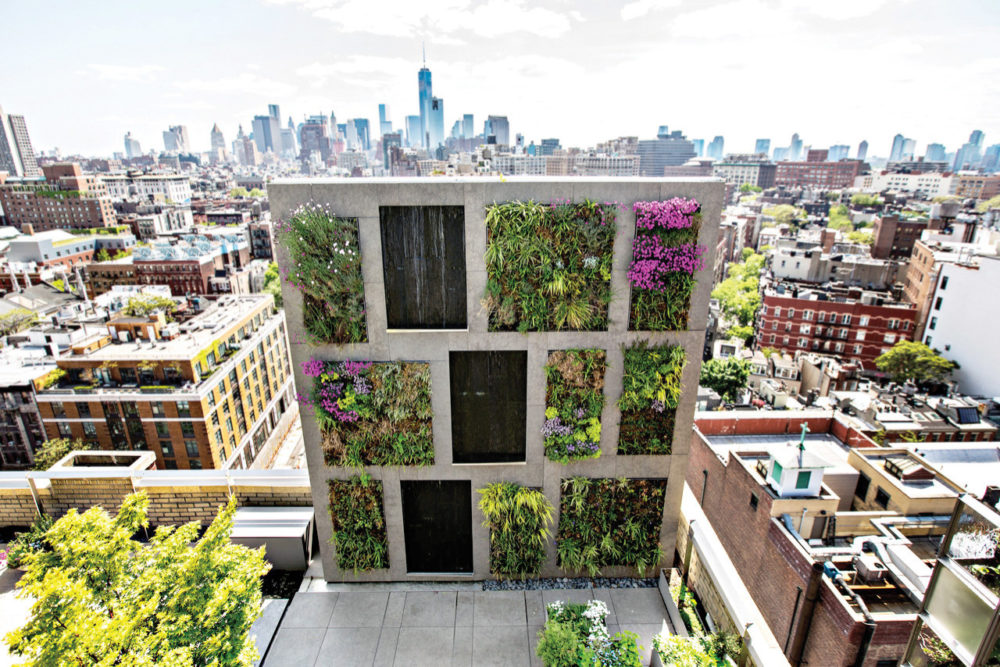
By considering these advantages, you can determine if a vertical garden is the right choice for your outdoor living space, and start enjoying the many benefits of this unique and attractive garden option.
For more photos watch our video:

